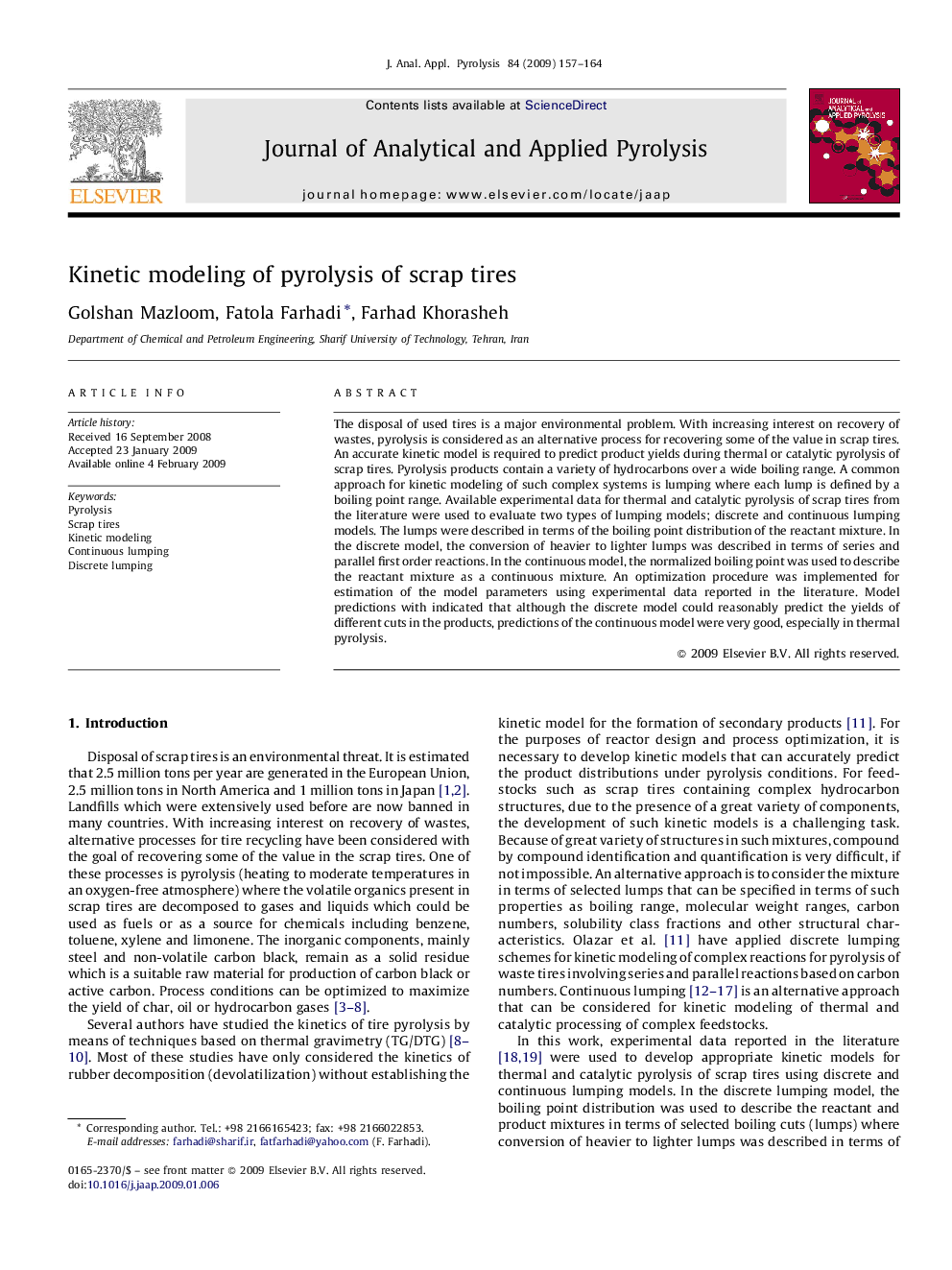| Article ID | Journal | Published Year | Pages | File Type |
|---|---|---|---|---|
| 1197039 | Journal of Analytical and Applied Pyrolysis | 2009 | 8 Pages |
The disposal of used tires is a major environmental problem. With increasing interest on recovery of wastes, pyrolysis is considered as an alternative process for recovering some of the value in scrap tires. An accurate kinetic model is required to predict product yields during thermal or catalytic pyrolysis of scrap tires. Pyrolysis products contain a variety of hydrocarbons over a wide boiling range. A common approach for kinetic modeling of such complex systems is lumping where each lump is defined by a boiling point range. Available experimental data for thermal and catalytic pyrolysis of scrap tires from the literature were used to evaluate two types of lumping models; discrete and continuous lumping models. The lumps were described in terms of the boiling point distribution of the reactant mixture. In the discrete model, the conversion of heavier to lighter lumps was described in terms of series and parallel first order reactions. In the continuous model, the normalized boiling point was used to describe the reactant mixture as a continuous mixture. An optimization procedure was implemented for estimation of the model parameters using experimental data reported in the literature. Model predictions with indicated that although the discrete model could reasonably predict the yields of different cuts in the products, predictions of the continuous model were very good, especially in thermal pyrolysis.
